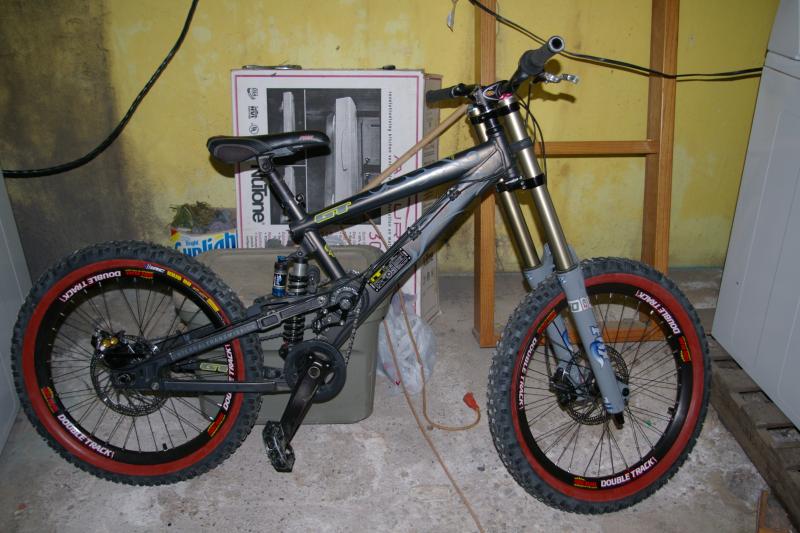Djamgils schreef:De Jean schreef:vraagje voor de rocket scientists alhier tezamen:
in feite is dit een single pivot. die worden harder bij t remmen, omdat het moment de vering wil indrukken. Nu als je de baan van t achterwiel bekijkt, moet die eerst naar achter, en daar trekt nu net die onderste buis aan. Dus: brake jack of niet?
Stuur uw antwoord op een gele briefkaart naar
merlina
postbus 54
1060 brussel
Wel brake jack. Het gaat er toch om of de vering wordt beinvloed door het remmen?
Het is gewoon een single pivot met de caliper daarop gemonteerd, dus gewoon brake jack.
Geen brake jack. Het gaat er idd. om of de vering wordt beinvloed door het remmen.
Voor de duidelijkheid (kon het zelf niet beter vertellen):
Single Pivot
The Single Pivot is the simplest type of rear suspension. It simply consists of a pivot near the bottom bracket and a single swingarm to the rear axle.
The rear axle will always rotate in a part-circle around the pivot point. Some implementations use linkages to attach the rear triangle to the rear shock for a progressive spring rate (see Faux Bar). An example is the Trek Fuel line which has a solid chainstay, yet uses a rocker link to activate the shock.
Other implementations directly attach the rear triangle to the rear shock for a more linear rate. Gary Fisher's Cake line is such an example. The main benefit of this design is its simplicity. There are few moving parts, relatively easy to design and has good small bump compliance.
Its flaws, however, are that the design suffers from bob, brake jacking, and chain growth. Some other manufacturers that use a single pivot design are Morewood, Orange, Cannondale, Santa Cruz, Mountain Cycle, small boutique frame builders such as bcd, and many inexpensive department store bikes.
De IT 1 heeft meer weg van het volgende concept maar dan op z'n GT's (plaatsing gear box, geen pedal feedback, vering blijft actief tijdens remmen):
Active Braking Pivot
The Active Braking Pivot (ABP) has just been invented and put into use by Trek. The ABP system uses a rear pivot concentric to the rear axle, and the brake is mounted on the seat stay.
This creates a different brake arc than the wheel, which allows the suspension to pivot freely under braking and not causing brake-jack or squatting.
Specialized's FSR system, as well as Giant's Maestro, and SantaCruz/Intense's VPP system all do the same thing just as well as Trek, while eliminating bobbing and lockout under pedalling.
Trek has also introduced a full-floater system to go along with the ABP. The Full-Float system mounts the rear shock to two moving points in the suspension as supposed to one end on the swing-arm, and the other to the frame.
This means as one part of the suspension compresses the shock, the other end of the shock moves away slowly. This allows Trek to use a smaller shock in a smaller space, which can cause problems if the shock is too small for the application.
What is the Benefit?
-The ABP keeps the suspension active and the rider in control while braking. Lock-up, or stiffening of the suspension under braking is virtually eliminated. Skidding is reduced; the tire stays in contact with the ground. Because the tire stays in contact with the ground, the brakes are more effective when they are used, and thus the time spent braking is reduced. Less braking also equals better handling and suspension by not loading the front fork.
Een filmpje,
http://www.youtube.com/watch?v=3sDot8FHtpg
